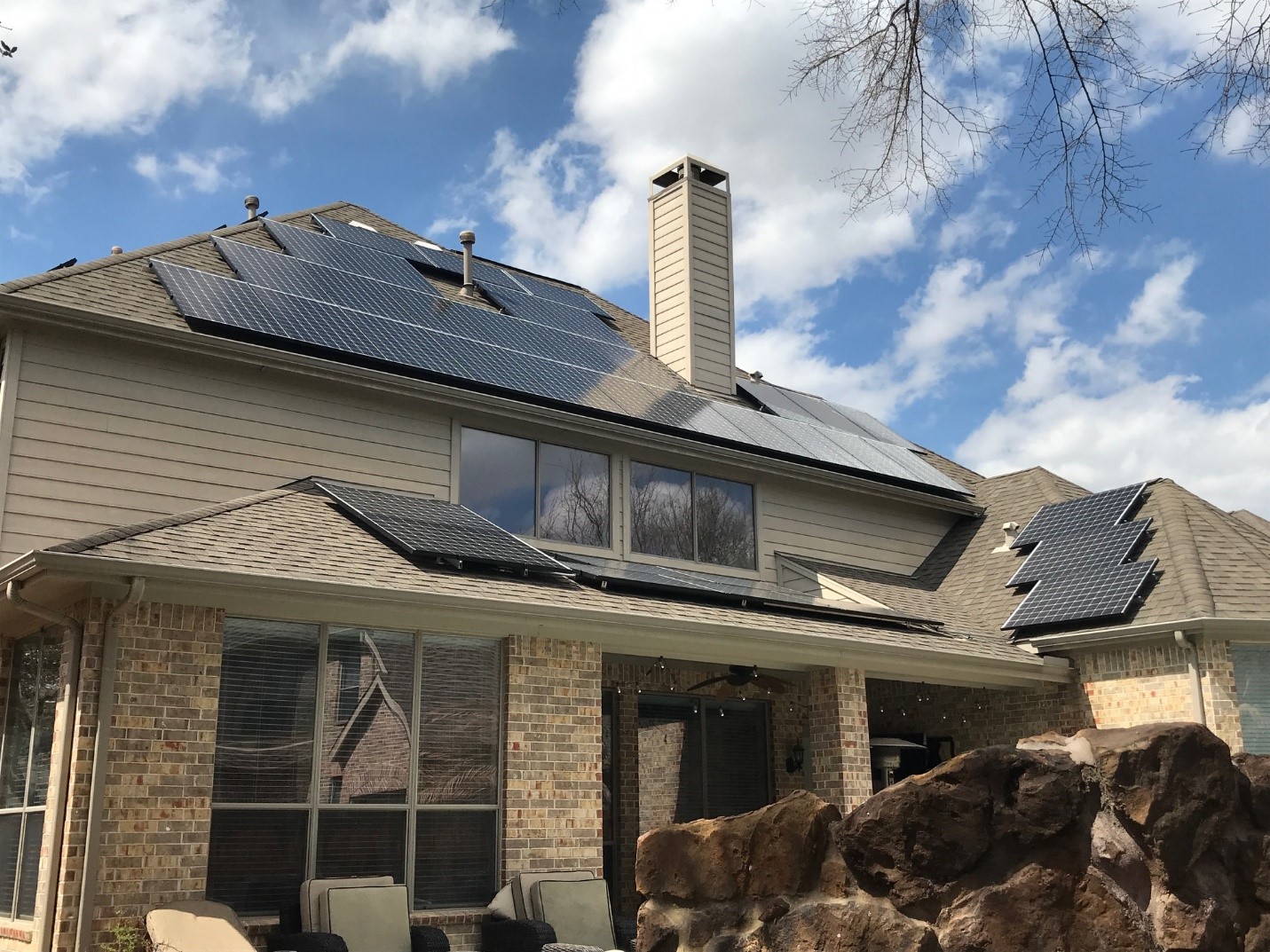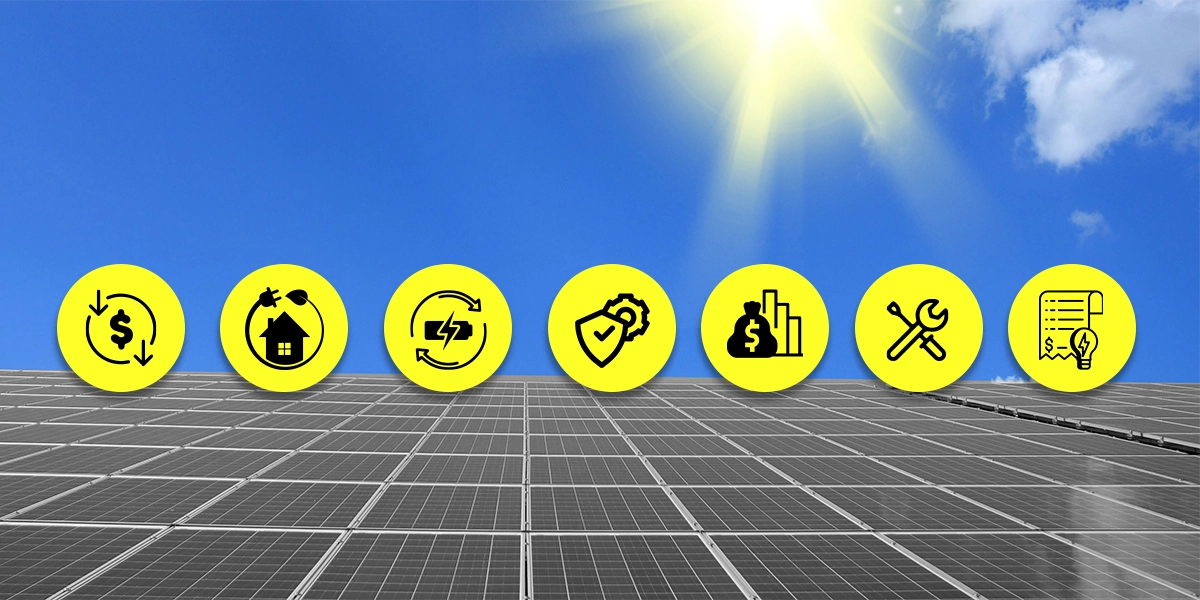- Updated On: June 21, 2025
Solar Panel Output:
Tips to Maximize Energy Production
As a potential solar customer, you may wonder, “How much electricity does a solar panel produce?” According to data from the U.S. Energy Information Administration (EIA), the average home in the United States requires 855 kilowatt-hours (kWh) per month. On average, a solar panel can generate about 400 watts of power under direct sunlight and produce about 2 kilowatt-hours (kWh) of energy per day. While solar power is an ideal solution to mitigate rising utility bills and long power outages, factors like roof direction, panel efficiency, and even weather changes, etc., may all affect the solar panel output. However, with a well-designed residential solar system and an understanding of the most critical factors that determine the output of solar, you can optimize your system’s performance and maximize your power production.
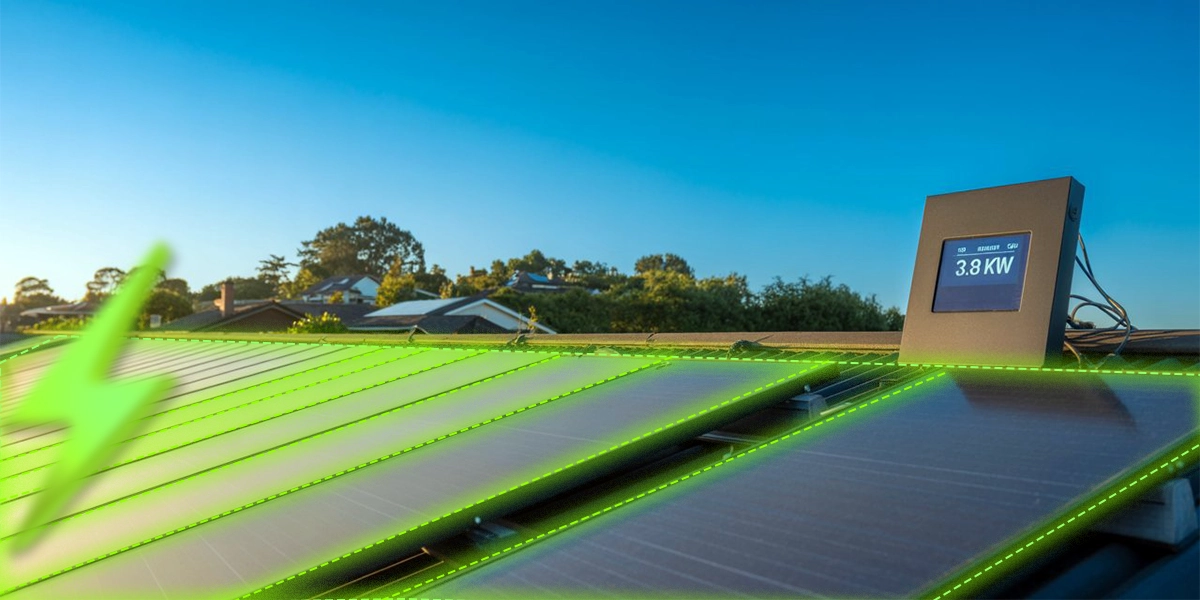
In this article, we will break down the factors that impact the system’s performance and tips to optimize your home solar system for maximum energy generation. We will also highlight how to calculate the solar power output of your panels.
What is the power output of a solar panel?
In ideal conditions, the best residential solar panels produce 400 watts of power per hour. The best measure of a solar panel’s power output is its watts, or output rating. Your solar savings depend on the power generation of your system. If it is not fulfilling your home energy needs and reducing your electric bills, the solar payback period will be longer. It is always preferable to invest in high-quality solar panels rather than cheap ones to offset the amount of electricity you use, especially if you have a small roof. Below are the output ratings of some of the best solar panels for your home:
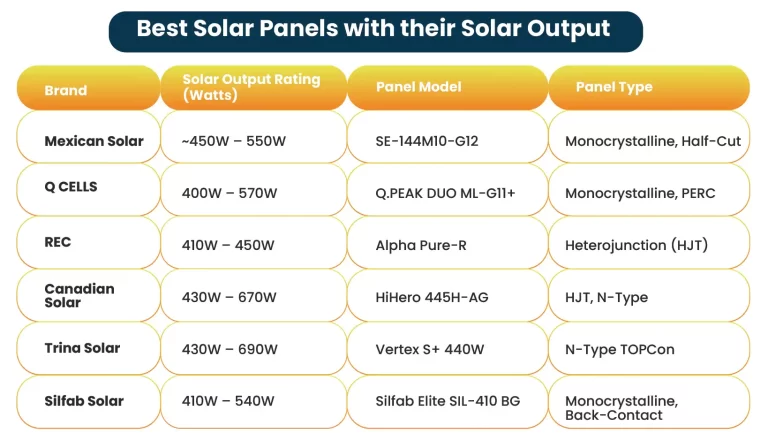
How much energy does a solar panel produce?
Cell efficiency is a vital variable. A panel’s capacity to generate power increases with its efficiency. The cells in most solar panels can convert 17–23% of the sunlight that strikes them into useful solar energy. The type of solar cell determines its efficiency. Polycrystalline cells are typically less expensive, but monocrystalline cells are more effective and produce more electricity. On average, a solar panel generates about 2 kWh of energy a day. As solar technology is evolving, bifacial solar panels are on the market, which can absorb sunlight from both sides of modules. They are efficient panels, as a 400-watt bifacial module can generate 480 W of electricity. However, they are expensive and have space requirements. That’s why these panels are not suitable for rooftop solar installation.
What are the top factors affecting the amount of electricity that solar panels produce?
The following factors impact how much energy solar panels produce:
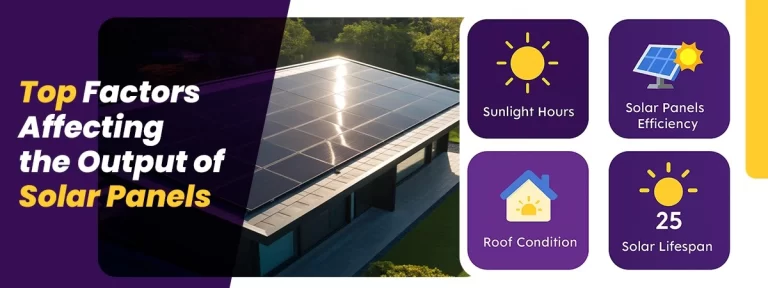
Sunlight Hours:
One of the main determinants of how much electricity a solar panel will produce is the amount of sunshine it receives. The panel generates more electricity when it gets more sunlight. Although solar panels work more efficiently in sunny states, it does not mean that they are not suitable for colder climates. Sun peak hours reflect how much sunlight a location gets per day.

A solar system with battery backup is the best solution for a home in all weather. During sun peak hours, you can generate and use solar power and store power in your solar batteries for the night. Also, you can send the excess power back to the grid and earn credits through net metering. In the case of cloudy days, when solar is not producing much, you can use grid power and get low bills with these credits.
Solar Panel Efficiency:
The energy output of the panel is also impacted by the solar module’s efficiency. The solar cells that actually convert sunlight into electricity are the building blocks of solar panels. Solar panels come in 3 main types: thin-film, polycrystalline, and monocrystalline. Monocrystalline panels are most popular as they can produce power more effectively than others.
Furthermore, the solar panel size may also affect how much power it produces. Nowadays, the majority of commercial and utility-scale solar panels feature 144 half-cut solar cells, but residential panels have 108 to 120 cells.
Additionally, the development of the solar cell will also have an impact. New solar technology using heterojunction and TOPCon technologies can be even more efficient than those with PERC technology, which produces more energy than older cell types. The most efficient residential solar panels can now convert 24% of the sun’s power into electricity.
Roof Condition:
One important factor influencing how much electricity solar panels can generate is the condition of your roof. Not every roof is suitable for solar power. To optimize solar output, the PV system must be positioned on roofs that are not shadowed. You should also consider the roof’s orientation. In the US, solar panels mounted on south-facing roofs provide the maximum electricity.
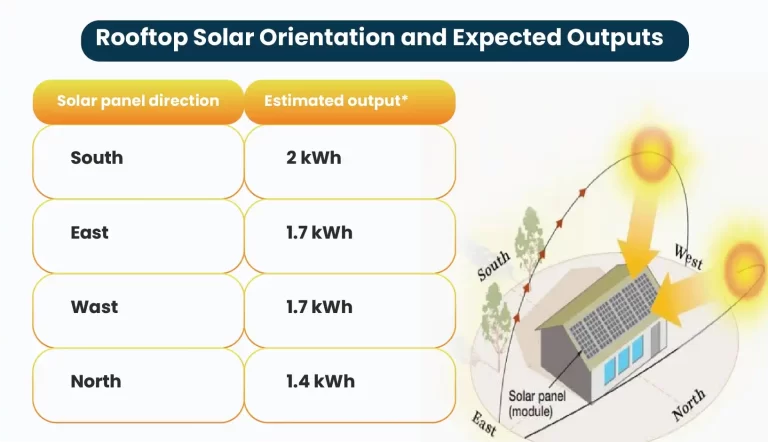
Solar Lifespan:
Remember that your solar panels will not produce the same amount of electricity over time. They gradually lose some of their power generation capacity with time. Solar panels typically degrade at a rate of 0.5% per year. As a result, panels typically function at around 85% of their original capacity by the end of their standard 25-year guarantee period. However, don’t worry, they still can produce much power to fulfill your power needs and low electric bills.
How do I calculate a solar panel output?
Assume you have installed a 400-watt solar panel and there are 5 peak sun hours in your state.
400 watts x 5 peak sun hours = 2,000 watt-hours per day
2,000 watt-hours / 1,000 = 2 kWh per day
2 kWh x 30 days = 60 kWh per month
2 kWh x 365 = 730 kWh per year
A typical home usually installs 18 solar panels to fulfill its energy requirement. So, if one panel produces 730 kWh annually, your solar output will be around 266,450 kWh per year.
This calculation is based on assumption. The best way to determine how much energy solar panels will generate on your roof is to consult with a trusted local solar installer like Solar SME, who considers all technical factors when calculating solar energy production.
How to maximize your solar panel output?
With the right solar system and smart solar maintenance, you can make your system more efficient. The solar panels must receive maximum sunlight and face south with minimal shading. Also, routine cleaning helps to boost solar production as it removes dust, leaves, or snow that block sunlight, especially if you live in a dusty area. Furthermore, you can invest in a smart panel like SPAN to optimize and manage your energy usage. Also, with a tracking system, you can identify potential solar power losses and make timely adjustments. Moreover, if you still feel that your system is not producing expected power, reach out to your solar installer for a home energy audit.
In conclusion, switching to solar with a certified solar installation company like Solar SME is pivotal if you want to maximize your solar output and savings in the future. A well-designed solar system with a right installation is vital for achieving the expected return from your investment. Solar SME considers all important factors while designing a solar energy system for your home or business. You can book an appointment or get a FREE quote with our smart solar calculator!
Related Articles:
Are you tired of high energy bills that drain your wallet every month? Do you know about off-peak electricity hours?
You can participate in a community solar project regardless of whether you rent or do not have a suitable roof or if you prefer not to have equipment installed on your property. Explore everything you should know if you are planning to subscribe to a solar farm.
Solar power is not just the cleanest; it’s the most abundant energy source on our planet. It’s estimated that the entire United States could be powered with about 22,000 square miles of solar panels.

